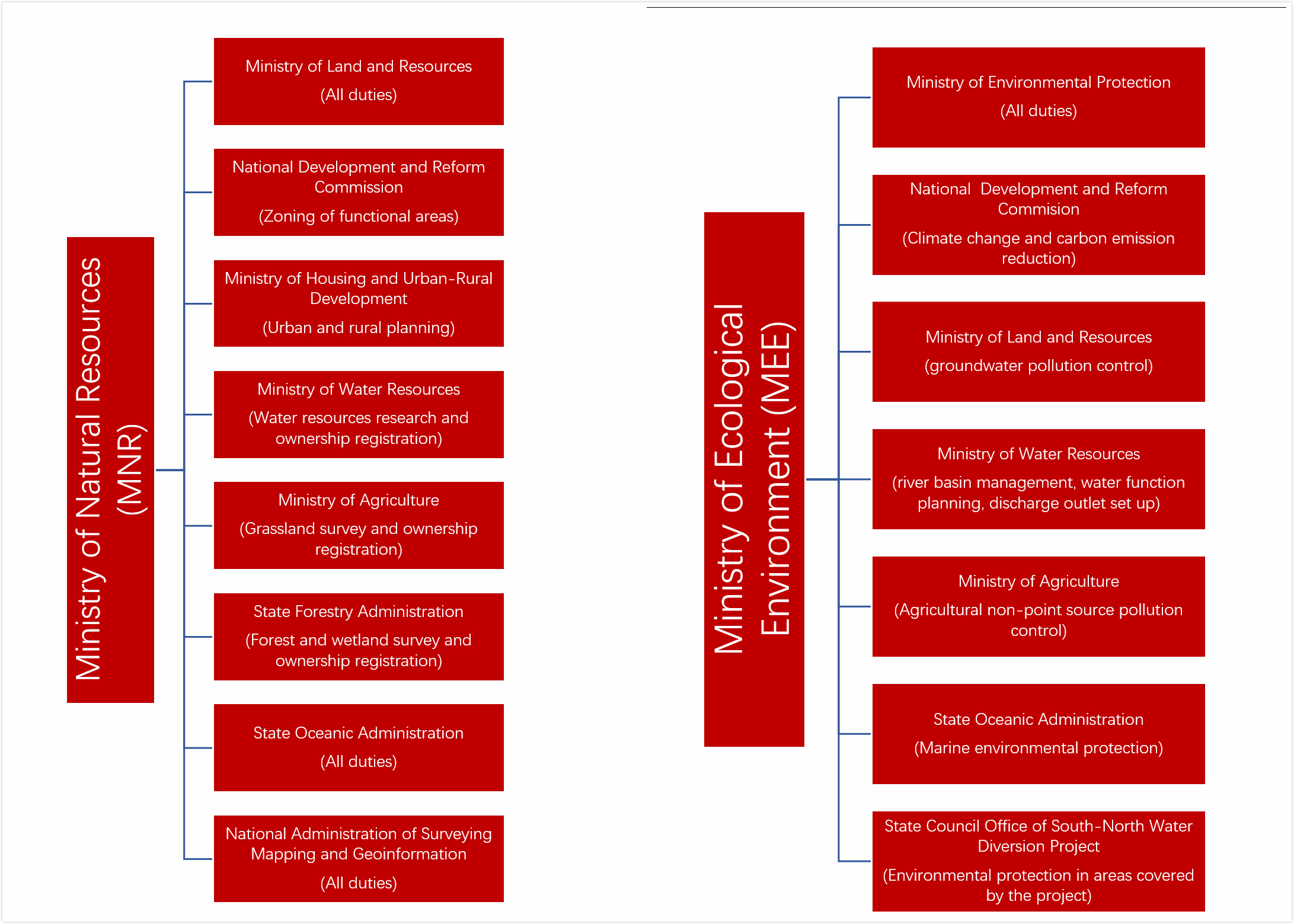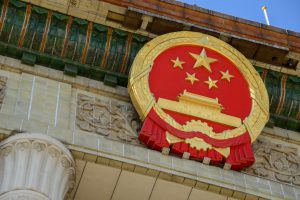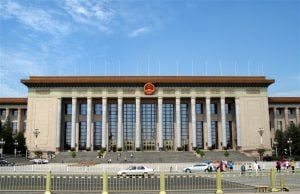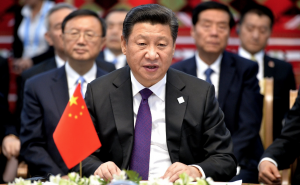“We take care of carbon monoxide, while carbon dioxide falls under the National Development and Reform Commission,” commented a frustrated Zhou Shengxian, then China’s Environment Minister, at a 2013 conference.
That type of bureaucratic fragmentation will soon become history if a sweeping plan to reshuffle cabinet level ministries, which was announced yesterday at the annual meeting of the National People’s Congress (NPC), is passed on March 17.
Currently, the National Development and Reform Commission (NDRC) is responsible for managing greenhouse gases and combatting climate change. However, these duties, together with the environmental functions of various other ministries, will be passed to a new Ministry of Ecological Environment.
The move is the fourth time in three decades – each at a ten-year interval – that China’s environmental agency (currently the Ministry of Environmental Protection) will see its remit expanded in a new department, highlighting the growing importance of environmental affairs in Chinese policy-making.
From ‘nine dragons’ to two
In China, people have long used the term “nine dragons rule the waters” (jiu long zhi shui) to refer to the fragmented roles and responsibilities for managing the environment.
Ma Jun, a prominent environmentalist and director of the Institute for Public and Environment Affairs (IPE), observed that “groundwater, agricultural effluents and river basin management each fall under a different government department, leading to buck-passing and infights.”
Tang Fanglin, an official with the State Forestry Administration, told chinadialogue, “You used to need stamps from 13 government ministries to get one document about national park pilot schemes greenlighted.”
All this is set to change though. The new plan will concentrate the scattered responsibilities of different government departments into two new ministries: the Ministry of Ecological Environment (MEE), and the Ministry of Natural Resources (MNR).
MEE will adopt most of the responsibilities of the Ministry of Environmental Protection, and incorporate pollution-related functions from NDRC, the Ministry of Water Resources and the State Oceanic Administration, among others.
MNR, on the other hand, will merge the natural resources management responsibilities that used to belong to governmental bodies in charge of forestry, agriculture, land resources, etc. In the process, some existing government departments, such as the State Oceanic Administration, will be eliminated, while others, such as the Ministry of Water Resources will see their mandate reduced.
 The new ministries and the various responsibilities they will take-over from existing departments (shown in brackets). Click to Enlarge
The new ministries and the various responsibilities they will take-over from existing departments (shown in brackets). Click to Enlarge
The reform is broadly in line with previous recommendations by top Chinese think tanks. In 2015, the Chinese Academy of Sciences suggested reorganising top government bodies into a “natural resources owner”, a “natural resources manager” and a “pollution controller”. MNR has emerged more or less as a natural resource owner and manager, while MEE will serve as the country’s top regulator of pollution, from all sources.
Experts have welcomed the move as a boost to bureaucratic efficiency. “It will definitely lower the coordination cost among government agencies,” remarked professor Li Zhiqing, an environmental economist at Fudan University.
Eliminating the regulatory barrier that existed between greenhouse gases and other pollutants has been interpreted as a signal that tougher action on carbon emissions may be on the way.
Peng Peng, an analyst with the Chinese Renewable Energy Industry Association, argued that once MEE takes over all emissions, “it’s almost unavoidable that companies will face the prospect of internalising the costs of greenhouse gas emissions,” as the environmental agency has a long track-record and a readily available tool-kit for regulating emitters.
Ecological civilisation formalised
The cabinet level reorganisation is also seen as a step forward for the much-discussed concept of “ecological civilisation”. In 2012, at the 18th Party Congress, the need to build an ecological civilisation was elevated to an unprecedented level, highlighting the importance of environmental affairs to the Chinese leadership.
In 2015, a master plan for the reform of institutions and systems to realise ecological civilisation was promulgated. The plan listed a set of principles and objectives, and announced that by 2020, China should “complete institutional set-up in line with ecological civilisation.”
“Establishing the new ministries is one of the most concrete steps along the way of implementing the master plan,” Peng Yingdeng, former director of Beijing’s Atmospheric Environment Research Institute, told chinadialogue. “It lays the foundation for the creation of key pieces of policies, such as payment schemes for ecological services,” he added.
The 2015 master plan spelled out a few key concepts of ecological civilisation. It argued that “natural resources should be properly valued,” and “holistically managed”. It also stipulated that economic activities should not result in ecological burdens that exceed the capacity of the environment to manage.
The set-up of the two new ministries embody those concepts. A core duty of the MNR is to serve as the ultimate “owner” of most of the country’s natural resources. To do that it will conduct census and surveys to ascertain the status and distribution of forests, wetlands and agricultural fields and assign proper values to those resources.
Establishing proper ownership and valuation of natural resources will be key to ecological civilisation reforms.
“Non-economic values of natural resources are chronically underappreciated, which leads to excessive exploitation and wastage,” wrote Gu Shuzhong and Li Weiming, two researchers at the State Council’s Development Research Centre, in 2016. They added: “Establishing proper ownership and valuation of natural resources will be key to ecological civilisation reforms.”
The MNR will also become the country’s top “spatial planner”, incorporating ecological considerations. “Instead of having multiple agencies drawing the so-called Ecological Redlines (zoning plans that seal off certain areas from development), the MNR will now act as the singular planner,” said Peng Yingdeng, meaning there will be “no more contradicting zoning plans that need to consider conflicting imperatives.”
Both the MNR and MEE reflect the “holistic management” idea, achieving reduced fragmentation in terms of regulatory mandates.
As Peng Kui, a project manager with Global Environment Institute (GEI), observed, “In the past, ecological rehabilitation projects used to fall victim to the competition between forestry and grassland administrations. The former would insist on planting tree as a means of rehabilitation while the latter preferred grass because such decisions determined funding to the respective agencies. With the merge, we can finally base such decisions on holistic, ecological considerations.”
Unresolved issues
The reorganisation does leave some regulatory boundaries untouched. The plan released on Tuesday for two ministries does not include a recommendation from the Chinese Academy of Sciences to further merge pollution control with conservation to create a “mega eco-ministry”, which would streamline environmental governance further. Under the new structure, authorities in charge of ecological zoning decisions may still need to reach out across ministries to get cooperation on emissions regulation.
“Some inter-ministerial coordination is unavoidable,” Tang Fanglin told chinadialogue. “If a national park is threatened by polluted air in the future, MNR will certainly need to negotiate with MEE.”
The relationship between central government and provincial and local authorities may also test the new institutional set-up. Experts have long argued that the dynamic between China’s central government and the authorities at provincial level and under is one of the key complications of a new environmental governance structure.
We still don’t know if the restructuring at the ministry level will be mirrored at the local level
“In some cases, the centre, as nominal ‘owner’ of natural resources, does not have de facto control of them at provincial level and below, allowing local authorities to squander them for profits,” write Gu and Li, adding: “In other cases, managing the local resources comes with many responsibilities but few benefits are retained by local governments, which disincentivises stringent governance.”
The reshuffle plan, being at cabinet level, does not immediately answer questions about centre-local alignment. “We still don’t know if the restructuring at the ministry level will be mirrored at the local level,” Peng Kui told chinadialogue.
Provincial pilot projects should help guide what happens next. For example, in Zhejiang province a “tiered ownership” scheme was devised to assess and allocate ownership of natural resources to different levels of government, from provincial to county level, based on their ecological significance. This matching process may incentivise better governance because it allows the official owner of the resource to also retain the benefits from managing it, instead of a higher authority.
Another part of the plan that lacks detail is how specific functions and responsibilities will be integrated into the new ministries. Climate change, for example, covers multiple sub-ministerial bodies under NDRC, including divisional offices and dedicated research centres. It is unclear if and how these NDRC units will be relocated to MEE.








